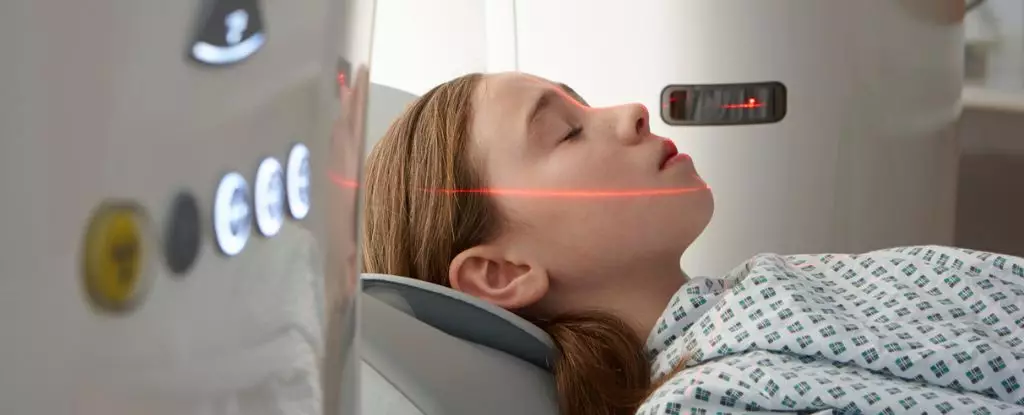In recent years, the use of computed tomography (CT) scans in the United States has surged beyond previous levels, marking a troubling trend in medical diagnostics. The rising numbers indicate that more Americans than ever are undergoing these potentially life-saving scans—over 30 percent more since 2007. However, this escalation is raising eyebrows among health professionals who are scrutinizing the long-term implications of such frequent exposure to low doses of ionizing radiation. While the advancement of CT technology has undeniably revolutionized the detection of diseases, the associated risks demand careful attention, particularly regarding cancer susceptibility.
The Theoretical Cancer Link: Is Fear Justified?
At the individual level, the likelihood of developing cancer as a direct result of a single CT scan is often deemed negligible. Many experts argue that the significant benefits of these scans, such as early disease detection, far outweigh the risks—especially when the tests are medically necessary. Nonetheless, a chilling study conducted by researchers from the US and the UK suggests that the cumulative effects of numerous CT scans could potentially account for a staggering 5 percent of all new cancer cases diagnosed annually in the US. This is an alarming statistic that could lead to an estimated 103,000 future cancer cases stemming from CT scans conducted just this year.
The implications of these findings are profound. By equating the projected risks associated with CT scans to those of other known carcinogens like alcohol consumption, the research challenges the narrative of safe medical practices, prompting a reevaluation of standardized medical protocols.
Radiation Risks: A Cause for Concern
Conclusive evidence linking low-level radiation exposure from CT scans directly to cancer remains elusive, primarily due to the complexity of cancer development and the multitude of contributing environmental factors. Current understandings of radiation risks predominantly draw from studies of survivors from Hiroshima and Nagasaki, as well as individuals exposed during nuclear disasters. While these studies provide a basis for potential risks, mapping these findings to the localized exposure of CT scans generates an ongoing debate that leaves healthcare providers, patients, and researchers at a crossroads.
The data utilized in these studies stem from extensive historical contexts, yet they apply assumptions that must be critically examined in light of current technological advancements in CT imaging. Varying radiation exposure from different scanning devices, patient size variations, and the type of scan performed complicate how these risks translate to clinical practice.
Children at Risk: A Vulnerable Population
As the discussion around CT scans evolves, particular attention must be paid to the subset of the population that is especially susceptible to the potential harms of ionizing radiation: children and adolescents. Research indicates that younger patients face heightened lifetime cancer risks from scans, with infused estimates suggesting significant correlations between excessive exposure at a young age and future incidences of thyroid cancer. These risks prompt serious ethical considerations for physicians making decisions about scanning protocols for younger individuals. The appeal to do no harm must extend beyond immediate diagnostic benefits to encompass long-term health outcomes.
The voices from the medical community acknowledge these risks. Pradip Deb, a medical radiation specialist from RMIT University, implores that the healthcare system be vigilant in avoiding unnecessary CT scans, advocating for alternative imaging methods that don’t involve radiation exposure. An even bolder call comes from Naomi Gibson, president of the Australian Society of Medical Imaging and Radiation Therapy, as she underscores that while vigilance is critical, patient welfare should be paramount.
The Need for a Holistic Approach to Medical Imaging
The current discourse on CT scans underscores a critical need for re-evaluating how medical imaging is approached, focusing not only on the immediacy of patient care but also on the broader implications of diagnostic technologies in public health. As the medical community grapples with these findings, it is imperative to foster a culture of informed decision-making, where the risks and benefits of imaging techniques are transparently communicated. An awareness campaign about the potential dangers associated with CT scans—considering the balance between necessary diagnostic practices and unnecessary exposure—could streamline practices toward safer alternatives.
Moreover, comprehensive follow-up studies tracking the long-term health outcomes of patients exposed to low levels of ionizing radiation from CT scans could illuminate gaps in current understanding and better inform clinical guidelines. The course of action is clear: as we move forward in embracing technological advancements, we must remain cautious, prioritizing patient safety without compromising diagnostic efficacy. The road ahead calls for a conscientious balance—one that champions medical progress while rigorously safeguarding public health in an era where the dichotomy between innovation and risk is ever more pronounced.


Leave a Reply